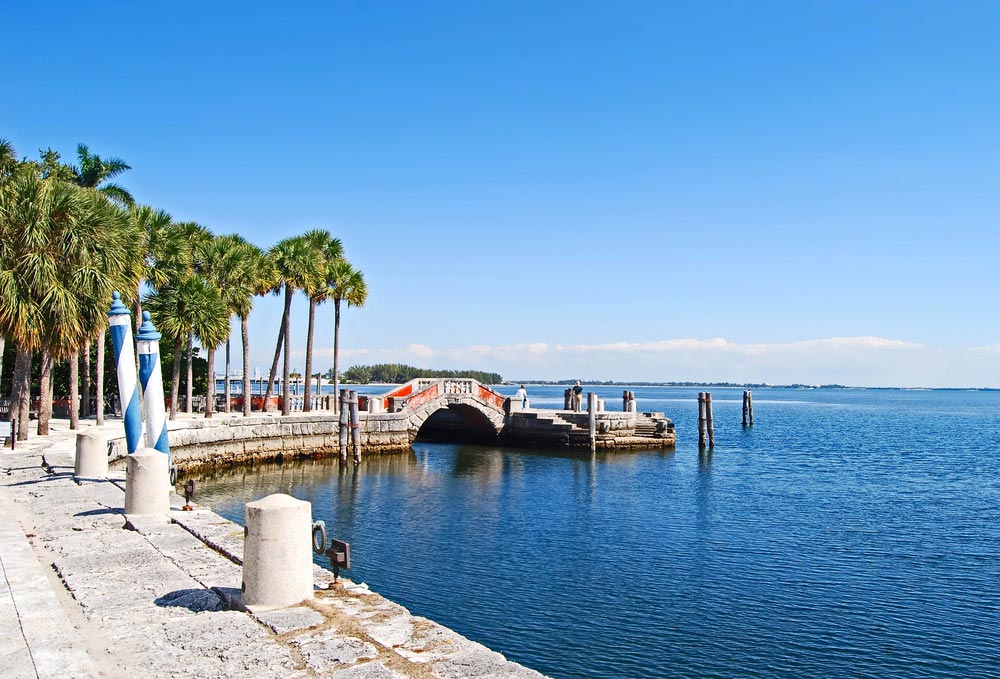Is the ground around your seawall starting to cave in? Cracks may be starting to form, or joints may be starting to fail. You may also see voids and sinkholes showing up near your property. If any of these are true, it may be time to repair it. It’s common for bulkheads to deteriorate, because the land side will settle over time. This can happen for a number of reasons — all of which will lead to soil erosion at the joints, as well as cracks in panels or below the toe. Once water makes its way through the bulkhead, the pressure on the other side will pull water into the land side as water levels start to rise. And eventually, it will push it out again as they drop.

How Sinkholes Appear Behind Bulkheads
Bulkheads are there to prevent erosion from occurring along shorelines and to protect properties located near bodies of water. Washout, sinkholes, and erosion are all signs of water infiltration. Water can attack bulkheads through cracks and deteriorated joints, which can be caused by repeated wave action (such as scouring). As water ebbs and flows, it can make its way into openings and pull soil out. This can create subsurface voids that will eventually collapse and bring soil down to water level, where it can be washed out.
The base soil on the dry side of the bulkhead is necessary for support against the water pushing against it. Cavernous subgrades and weak soil can undermine the bulkhead’s integrity, which will cause settlement to occur at walkways. If you want to keep your waterfront property safe and preserve its landscape, you should take care of soil loss and washout problems early.
How to Know if You Need Bulkhead Repair
You can determine if your bulkhead needs to be repaired by doing the following:
- Looking for cracks, seams, and holes in the wall.
- Checking the wood to see if its soft or rotting. You might even be able to poke a screwdriver through a crack to see how deep it goes.
- Checking the condition of your decking. If it’s warped, broken, peeled back, or covered in algae, it needs to be replaced.
- Looking for mounds of dirt appearing in the water. This could be a sign that a sinkhole is forming, which can cause serious damage to your bulkhead.
Bulkheads are often sturdier than they appear. Even if they have small cracks, it may not be a significant problem. But if water is seeping through, it needs to be fixed before more damage occurs to your land or the surrounding area.
Leaning is another problem that can occur with all types of bulkheads — whether it’s made of concrete, wood, or vinyl. This is a clear indication that some or all of the tie-back rods have rotted out. If the piles, walers, and sheeting appear to be in good shape but the bulkhead is still leaking out, your rods are most likely gone. This issue can be repaired, but it needs to be done by a professional. If you don’t do it quickly, the bulkhead will completely fail (which will cause it to fall over).
Steps for Repairing a Damaged Bulkhead
The steps involved for repairing a damaged bulkhead will depend on the material that was used in its construction. If it’s made of concrete, it can be repaired by doing the following:
- Driving a new wall pile in front of the weep hole in the concrete sheeting.
- Digging a trench behind the bulkhead for a new tie-back rod.
- Driving a new deadman pile.
- Installing and tightening a rod through the new wall pile and deadman.
If it’s made out of wood or vinyl, it can be repaired by doing the following:
- Digging a trench behind the bulkhead to expose the broken rod.
- Removing the old rod.
- Inspecting the deadman and installing a new one (if necessary).
- Installing and tightening a new rod.
You want to “pull” the bulkhead back to its original position, so you will have to dig all the dirt out from behind it. You will also need to relieve the pressure of the dirt from behind the bulkhead, so you can move it back in place. There are, of course, many different types of repairs. Most of them are short-term, but there is always a right and wrong way (with very little cost difference between the two).
Issues related to bulkhead deterioration are common. The surrounding soil might be caving in, cracks may start to form, or the joints might be failing. You may even see voids and sinkholes showing up around your property. If you notice any of these signs, it might be time to call someone for seawall or bulkhead repair.
Over time, the soil on the land side of the bulkhead might be setting (which can happen for a variety of reasons). This can eventually lead to soil erosion around the joints and cracks in the panels or below the toe of the bulkhead. Once water makes its way through the bulkhead, it will be pulled through to the land side as the levels rise and will push out again as they drop (taking the soil away with it).

Here are some common questions people ask about bulkhead repair.
The primary purpose of a bulkhead is to prevent land movement caused by erosion, tides, or wave action by separating soil from water. They’re similar to retaining walls, except they have more engineered components that give them a greater degree of functionality and durability.
Like bulkheads, seawalls are vertical protection structures. Both are used to contain and stabilize the soil located behind the wall. But unlike bulkheads, seawalls can withstand sustained wave action and have some resistance against the effects of wave overtopping.
Here are some of the reasons why bulkheads can fail:
Slab Joint (Seam) Separation — This is one of the most common reasons bulkheads fail, and it’s caused by an uneven force of hydrostatic pressure pushing against the panels (especially during low tide).
Tieback Failure — Tieback rods can oxidize, corrode, or weaken over time. If that’s the case, you may need to add new tieback rods to reinforce any weakened areas.
Sinkholes — These small areas of sunken soil will usually be located on the land side of the bulkhead. There are times when sinkhole erosion will happen just below the surface, and the only way to detect it is to look for mounds of soil in the water near the joints of the bulkhead (which may only be visible during low tide).
Toe and Berm Failure — The cumulative stress from speeding boats and excessive wave action can cause the supporting berm on the water side of the bulkhead to deteriorate and give way, which will allow the toe to slip outward.
Waterline Failure — Long-term exposure on the water side of the panels can lead to rust marks and horizontal cracks. As they age and expand, the slabs can break down along these lines. These types of waterline breaks can also happen if the support provided by the tiebacks isn’t evenly distributed, which causes them to crack or separate from continuous exposure to hydrostatic pressure.
Cap Failure — This is one of the easiest bulkhead problems to detect and can be caused by normal aging of the concrete, an uneven amount of hydrostatic pressure that’s weakening part of the structure, or tieback failure resulting from the cap having to support more than what it’s designed for.
Be sure to speak to a professional for more information.
All bulkheads have a lifespan, even if it’s a long one. When it involves the forces of nature, no structure can last forever. But there are some things you can do to extend the life of your bulkhead. One of them is to install a French drain (if you don’t already have one), because it can even out the pressure differential between your bulkhead’s land and water sides. An uneven pressure differential is one of the most common causes of bulkhead failure, but it’s also one of the easiest to prevent.
You want to direct water from your gutters, storm drains, or sprinklers so it doesn’t pool near the bulkhead or run into your French drain. You also want to keep your bulkhead in mind when you’re planning your landscape design, and be sure to set a 10-foot “buffer zone” along the length of the bulkhead. Any heavy equipment traveling near the edge of the bulkhead or large trees planted too close to any of the bulkhead’s structural components can cause excessive pressure that will cause it to fail sooner than expected.
If you’re bulkhead is damaged and you’re looking for someone who specializes in Corpus Christi foundation repair, be sure to get in touch with Streem Foundation Repair.
